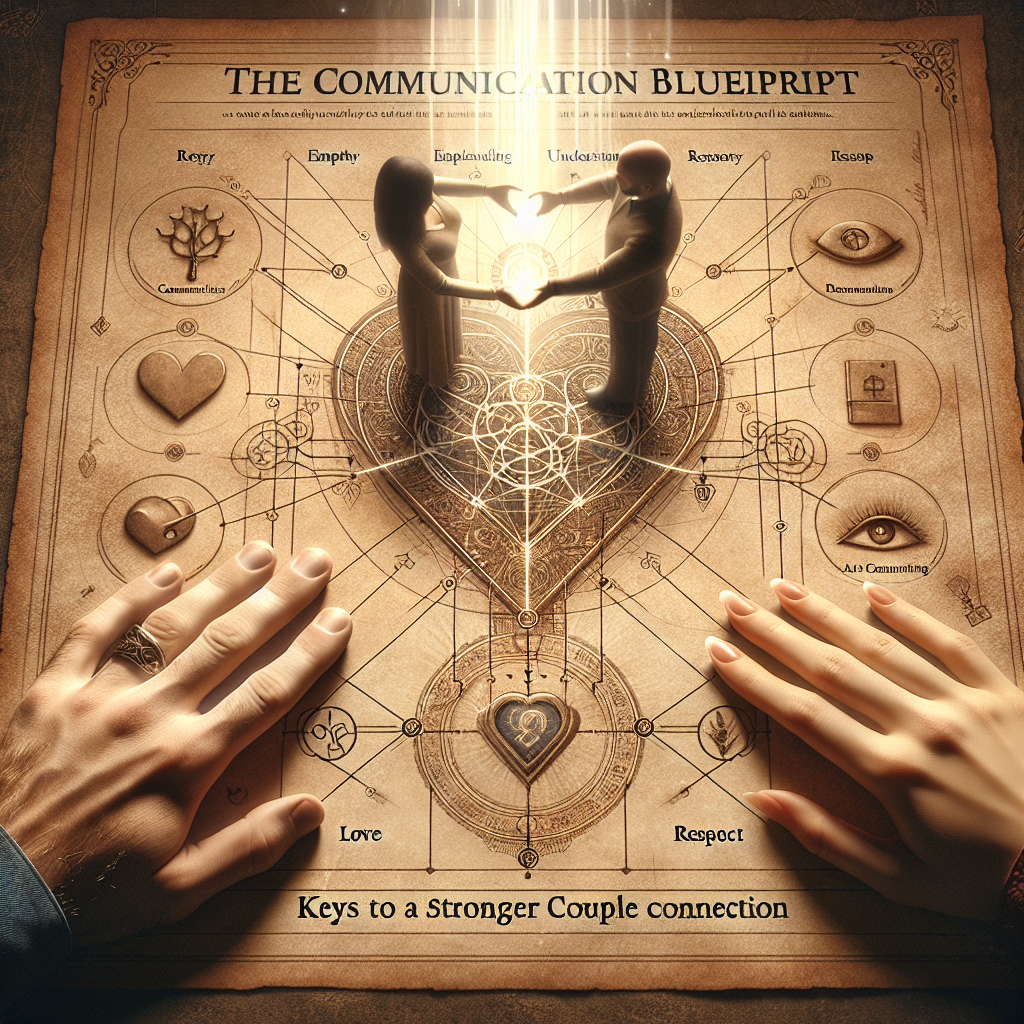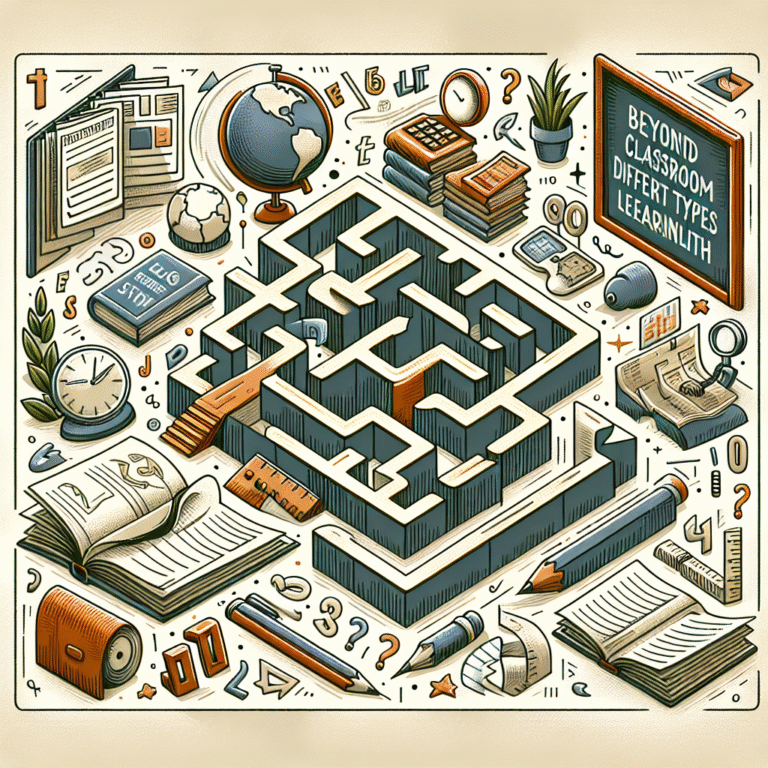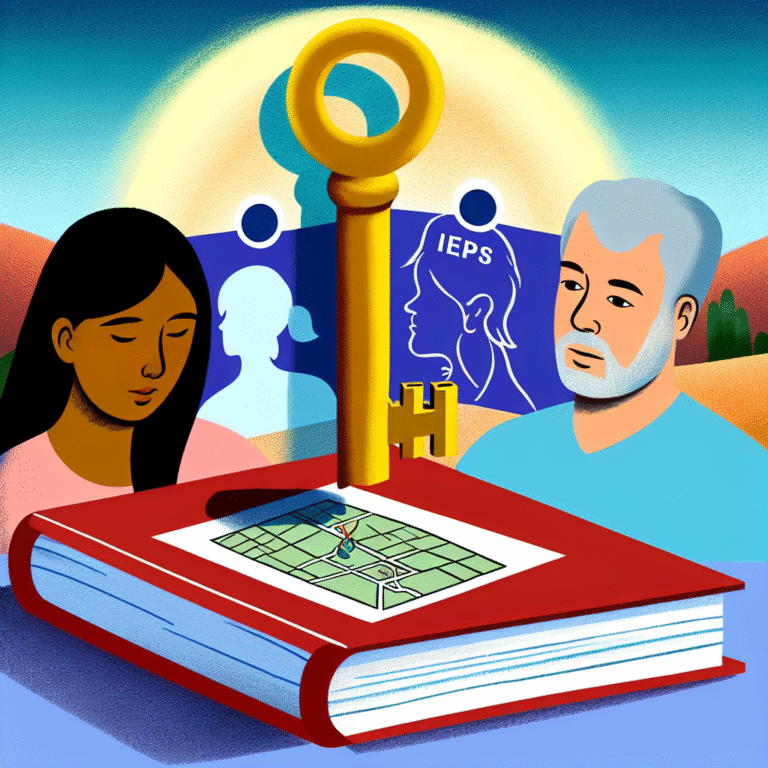
The Communication Blueprint: Keys to a Stronger Couple Connection
Introduction
In a world where distractions abound—from the constant ping of smartphone notifications to the demands of everyday life—effective communication within a relationship can sometimes feel like an elusive goal. Couples often struggle to understand each other, leading to frustration, miscommunication, and emotional distance. This is where The Communication Blueprint: Keys to a Stronger Couple Connection comes into play. By adopting a structured approach to communication, couples can build deeper emotional bonds, resolve conflicts constructively, and enhance intimacy in their relationships. In this article, we will explore practical insights and strategies to create a robust communication framework, using real-world case studies to illustrate the principles at work.
The Foundations of Effective Communication
Understanding the Importance of Communication
At its core, communication is more than just exchanging words; it’s about connecting on an emotional level. Research shows that healthy communication directly correlates with relationship satisfaction and longevity. According to a study published in the Journal of Marriage and Family, couples who engage in open dialogues report higher levels of happiness and connection.
The Communication Blueprint: Four Pillars
1. Active Listening:
Active listening involves fully concentrating, understanding, responding, and remembering what is being said. It requires setting aside distractions and showing genuine interest in your partner’s perspective.
2. Emotional Intelligence:
Emotional intelligence plays a critical role in understanding both your feelings and those of your partner. Recognizing emotions can help couples navigate conversations more effectively and empathetically.
3. Assertive Expression:
Being assertive means expressing your feelings and needs clearly and respectfully. This allows partners to communicate without feeling attacked or belittled.
4. Conflict Resolution Skills:
Disagreements are inevitable in any relationship. Having strategies to address conflicts constructively can prevent escalation and build stronger connections over time.
Case Study: The Roberts Family
Scenario:
Emily and Mark Roberts had been married for five years but found themselves frequently arguing over trivial matters. Emily felt unheard, while Mark believed he was always misunderstood.
Application of The Communication Blueprint:
Active Listening: During a couple’s workshop, they learned the importance of active listening. They practiced paraphrasing each other’s statements to ensure understanding.
Emotional Intelligence: With the guidance of a therapist, they explored their emotional triggers and how they reacted during conflicts.
Assertive Expression: They implemented "I" statements to express their feelings, for example, "I feel frustrated when…", which helped reduce blame and defensiveness.
- Conflict Resolution: They established a “cooling-off” period to prevent heated arguments, allowing time to reflect on their feelings before addressing issues.
Analysis:
Through these techniques, the Roberts family transformed their communication patterns, leading to deeper empathy and emotional intimacy. This case highlights the power of structured communication in re-establishing a couple connection.
Building Your Communication Skills
Practical Strategies to Enhance Communication
Daily Check-Ins:
Reserve a few minutes each day for a “relationship check-in” to discuss feelings, concerns, or highlights of the day.
Non-Verbal Cues:
Understand that communication is not just verbal; pay attention to body language, facial expressions, and tone of voice.
Communication Journals:
Consider keeping a journal to express thoughts or feelings that you find difficult to communicate verbally. Share entries with each other during discussions.
- Mindfulness Practices:
Incorporate mindfulness into your interactions. Practice being present during conversations by minimizing distractions.
Table: Common Communication Pitfalls and Solutions
| Communication Pitfall | Solution |
|---|---|
| Interrupting | Practice waiting for your turn to speak. |
| Mind Reading | Ask open-ended questions instead of assuming. |
| Blame and Criticism | Utilize “I” statements to express feelings. |
| Avoidance | Schedule regular discussions for conflict resolution. |
The Impact of Technology on Communication
The Double-Edged Sword of Digital Communication
In today’s digital age, technology influences how couples communicate, either enhancing or hindering their connections. While texting and social media can foster quick exchanges, they also risk misinterpretation and emotional disconnect.
Balancing Digital and Face-to-Face Interaction
To maintain a strong connection, couples should:
- Limit phone use during quality time.
- Use video calls to maintain intimacy when apart.
- Set boundaries around social media usage to prevent jealousy and insecurity.
Case Study: The Johnsons
Scenario:
Sarah and Jake Johnson struggled with their relationship after moving to different cities for work. They relied heavily on texting, which led to frequent misunderstandings.
Application of The Communication Blueprint:
They embraced video calls and began to schedule weekly virtual date nights. By making communication more personal, they reignited their emotional connection, realizing the limitations of texting.
Analysis:
This adjustment not only improved understanding but also reinforced their bond and commitment to each other, showcasing the need to adapt communication methods in the digital landscape.
Overcoming Communication Barriers
Identifying Common Roadblocks
Cultural Differences:
Different backgrounds can shape communication styles. Recognizing and respecting these differences is essential.
Stress and Life Changes:
Stress from work, family, or financial challenges can impact how couples communicate. Prioritizing discussions about stressors can help.
- Past Trauma:
Unresolved issues from past relationships can inhibit open communication. Addressing these with professional help can facilitate healing.
Strategies for Overcoming Barriers
Cultural Awareness Training:
Attend workshops or read literature that explores cultural communication styles.
Regular Stress Management Techniques:
Implement stress relief practices such as yoga or meditation that couples can do together.
- Therapy or Counseling:
Professional assistance can provide tools and frameworks to navigate communication challenges stemming from past trauma.
The Transformative Power of Vulnerability
Embracing Vulnerability for Deep Connection
One of the most profound elements of The Communication Blueprint: Keys to a Stronger Couple Connection is the role of vulnerability. Sharing fears, dreams, and insecurities fosters trust and deepens intimacy.
Case Study: The Taylors
Scenario:
Brittany and Alex Taylor faced challenges in expressing their innermost feelings, leading to emotional distance in their marriage.
Application of The Communication Blueprint:
They decided to engage in a “vulnerability exercise,” where they took turns sharing their deepest fears and aspirations without judgment. This exercise allowed them to strengthen their bond and create a safe space for open dialogue.
Analysis:
This shift changed their communication dynamics; vulnerability helped dismantle the walls they had built around their emotions, enabling more honest conversations.
Conclusion
Through The Communication Blueprint: Keys to a Stronger Couple Connection, couples can unlock the secrets to enhancing emotional intimacy, resolving conflicts, and fostering deeper relationships. The strategies outlined in this article—from active listening to embracing vulnerability—are not just theoretical concepts; they can fundamentally transform how partners interact and connect.
By taking actionable steps to improve communication, you are investing in your relationship’s health and longevity. Remember, communication is a skill that requires ongoing practice and dedication. The journey toward a stronger couple connection begins with a single conversation—embrace it.
FAQs
1. What is the main purpose of the Communication Blueprint for couples?
The primary aim of the Communication Blueprint is to provide couples with structured strategies to improve their communication skills, resolve conflicts, and deepen their emotional connection.
2. How can we practice active listening effectively?
Active listening can be practiced by maintaining eye contact, using affirming nods, and summarizing or paraphrasing your partner’s points to confirm understanding.
3. Can technology improve communication in a relationship?
Yes, technology can enhance communication by facilitating regular check-ins and virtual dates, but couples should be mindful of its pitfalls, such as misinterpretation of texts.
4. How important is vulnerability in communication?
Vulnerability is critical as it fosters trust, encourages openness, and strengthens the emotional bond between partners.
5. What are some resources to improve communication skills further?
Consider reading relationship-focused books, attending workshops, or seeking counseling for structured guidance on improving communication skills.
By understanding and leveraging The Communication Blueprint: Keys to a Stronger Couple Connection, couples can overcome obstacles and enjoy a deeply fulfilling, connected partnership.















